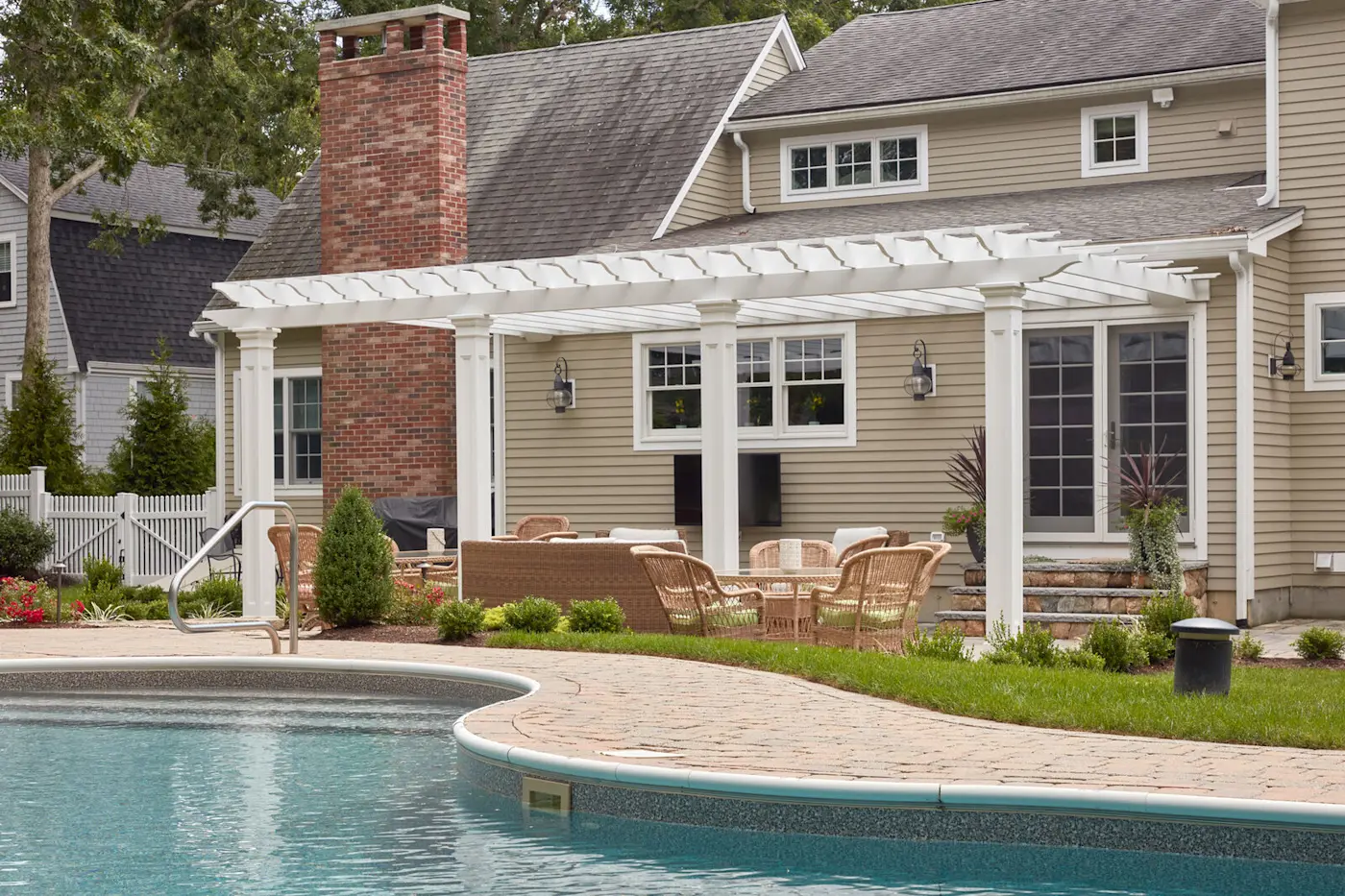When creating a captivating outdoor living space, few outdoor structures can match the beauty and functionality of a pergola. These structures offer a unique combination of defining a space while providing shade and a visual focal point. Whether you want to extend your living area, add shade to a property without trees, or simply enhance the beauty of your outdoor space, selecting the right pergola requires careful thought..
The Appeal of Pergolas
Pergolas provide dappled shade, allowing you to enjoy the outdoors while staying protected from direct sunlight. They serve as an extension of your living area, creating a sense of outdoor room with defined "walls" and "ceilings." They add an aesthetic focal point to any landscape, enhancing your outdoor space's beauty and charm.
Structural Options
Pergolas come in various options to suit different preferences and space requirements. They can have four posts, be cantilevered, or be attached to a building, depending on the layout and design of your space. A pergola’s roof can be solid, slatted, or incorporate fabric for added shade. Moreover, you can find pergolas designed in various styles, ranging from Victorian to Craftsman to contemporary, allowing you to choose one that complements your property's existing architecture and design.
Function
When beginning a project, the first step is to determine the space's intended function. How do you plan to use the pergola? This answer will guide your pergola's design, shape, size, and placement. To establish the context, conduct a site analysis considering factors such as the best views from the pergola, proximity to the house, and the intended use of the space. It's also important to consider the time of day you anticipate using the pergola, as this will determine the ideal positioning to maximize shade and comfort.
Design
To ensure a cohesive and visually appealing outdoor space, consider the design elements of your pergola. The pergola design should harmonize with neighboring buildings' existing themes and colors. Incorporating the style and color of the home's exterior trims into the pergola can create a seamless transition for residential structures. The main structure's architectural language and flow will enhance the pergola's overall visual appeal.
Custom Built or Standard?
You must decide whether a prefabricated pergola or a custom design is best based on your landscape, architectural design, and budget. When choosing a standard pergola, ensure it fits within the available space and meets the requirements. If you opt for a custom design, you’ll want a pergola design that complements the surrounding area and is unique to your outdoor space.
Roof Type
The type of roof you select for your pergola is another essential consideration. An open roof design is suitable for milder climates, as it allows you to enjoy the surrounding trees and sky while creating an airy ambiance. However, an open roof may not provide enough shade in hot climates. In such cases, a solid roof can offer better protection from the sun. Additionally, a solid roof enables the pergola to remain usable during warm rain showers. However, it's important to note that solid roofs may collect excess snow during winter, so make sure your pergola is designed to handle the weight if you’re located in a cooler climate.
Attachments
Attached pergolas are typically connected to the home using a ledger beneath the roof overhang. However, there are other options for older homes with lower rooflines. Another option is attaching the cover directly to the roof, which is usually less visually appealing and requires additional steps. An alternative is constructing an open-gable attached patio cover by adding a new gable to the roof, which costs more but doesn't add more weight.
Before designing your pergola, consider the access door and how windows in the house might affect the placement of support beams. For example, an attached pergola can help mitigate excessive heat for south-facing windows, but if the side of the house has a low roofline or receives less sunlight, attaching a pergola could make the room darker.
Browse through some of our Attached Pergolas in our Inspiration Gallery.
Proportion
A properly sized pergola should be proportional to the size of the home and not overpower it. Aim for a ratio of 1:1.618, meaning if the pergola's height is 96 inches, the length should be approximately 155 inches.
The pergola should have a minimum height of 80 inches from the ground to the bottom of the girder. Ensure at least 88 inches of clearance under the fan blades if a ceiling fan is included.
Let’s Get Started
If you need inspiration for your next pergola project, take a look at dozens of custom-designed pergolas crafted by Walpole Outdoors and schedule your free design consultation to talk with one of our design experts.
